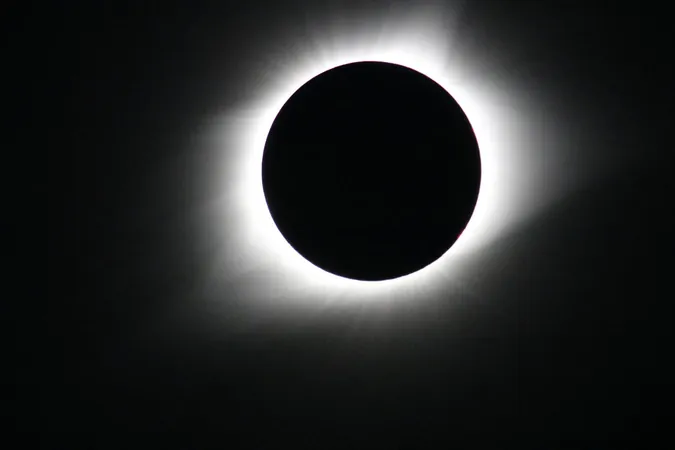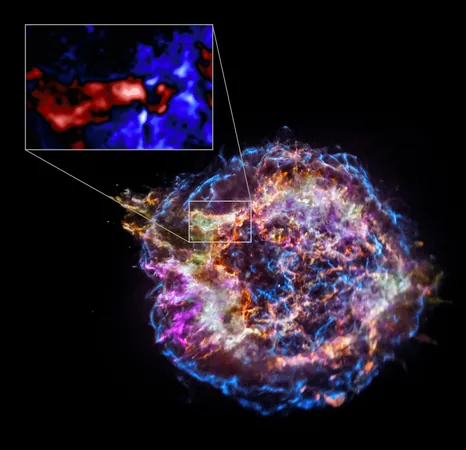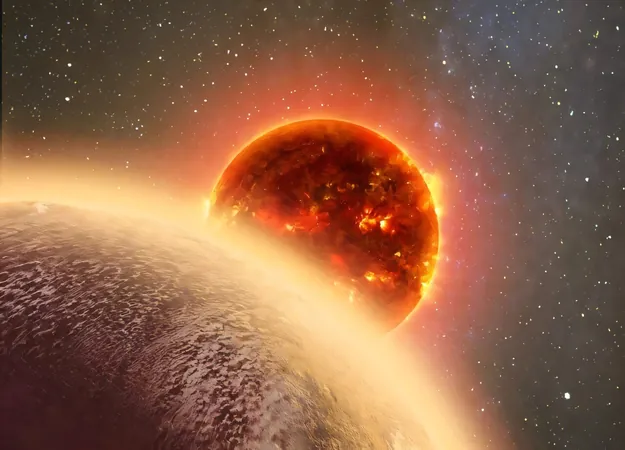
A Celestial Duel: The First Total Solar Eclipse Observed with a Comet!
2025-07-19
Author: Jacques
A Historic Astronomical Event
On July 19, 418 C.E., an awe-inspiring event unfolded in the skies that would capture the attention of historians and astronomers alike. This day is notable for marking the first recorded instance of a total solar eclipse occurring simultaneously with the sighting of a comet.
Ancient Observations by Philostorgius
The Turkish-born Church historian Philostorgius chronicled this extraordinary phenomenon in his work, *Epitome Historiae Ecclesiasticae*. He detailed the eerie scene: 'As Theodosius entered adolescence, at approximately eighth hour, the sun was so completely eclipsed that stars appeared.' But that wasn’t all; in the eclipsed sky, an unusual conical light appeared, prompting some to mistakenly label it a comet. However, Philostorgius disagreed, insisting it lacked the classic comet features, such as a tail or the twinkling nature of a star.
What Was This Celestial Light?
Describing the celestial object further, he likened it to 'a great lamp-flame,' a singular light without a star serving as its wick. He noted its unusual trajectory, beginning from the eastern horizon — where the sun rises during the equinox — and gliding over the tail of the Great Bear before drifting westwards.
Contrasting Views from East and West
Despite Philostorgius's skepticism, records from Europe and China confirmed the presence of a comet that day, solidifying this event in the annals of astronomical history. It stands as a remarkable intersection of two celestial occurrences, forever marking July 19, 418 as a day of wonder in our skies.









 Brasil (PT)
Brasil (PT)
 Canada (EN)
Canada (EN)
 Chile (ES)
Chile (ES)
 Česko (CS)
Česko (CS)
 대한민국 (KO)
대한민국 (KO)
 España (ES)
España (ES)
 France (FR)
France (FR)
 Hong Kong (EN)
Hong Kong (EN)
 Italia (IT)
Italia (IT)
 日本 (JA)
日本 (JA)
 Magyarország (HU)
Magyarország (HU)
 Norge (NO)
Norge (NO)
 Polska (PL)
Polska (PL)
 Schweiz (DE)
Schweiz (DE)
 Singapore (EN)
Singapore (EN)
 Sverige (SV)
Sverige (SV)
 Suomi (FI)
Suomi (FI)
 Türkiye (TR)
Türkiye (TR)
 الإمارات العربية المتحدة (AR)
الإمارات العربية المتحدة (AR)